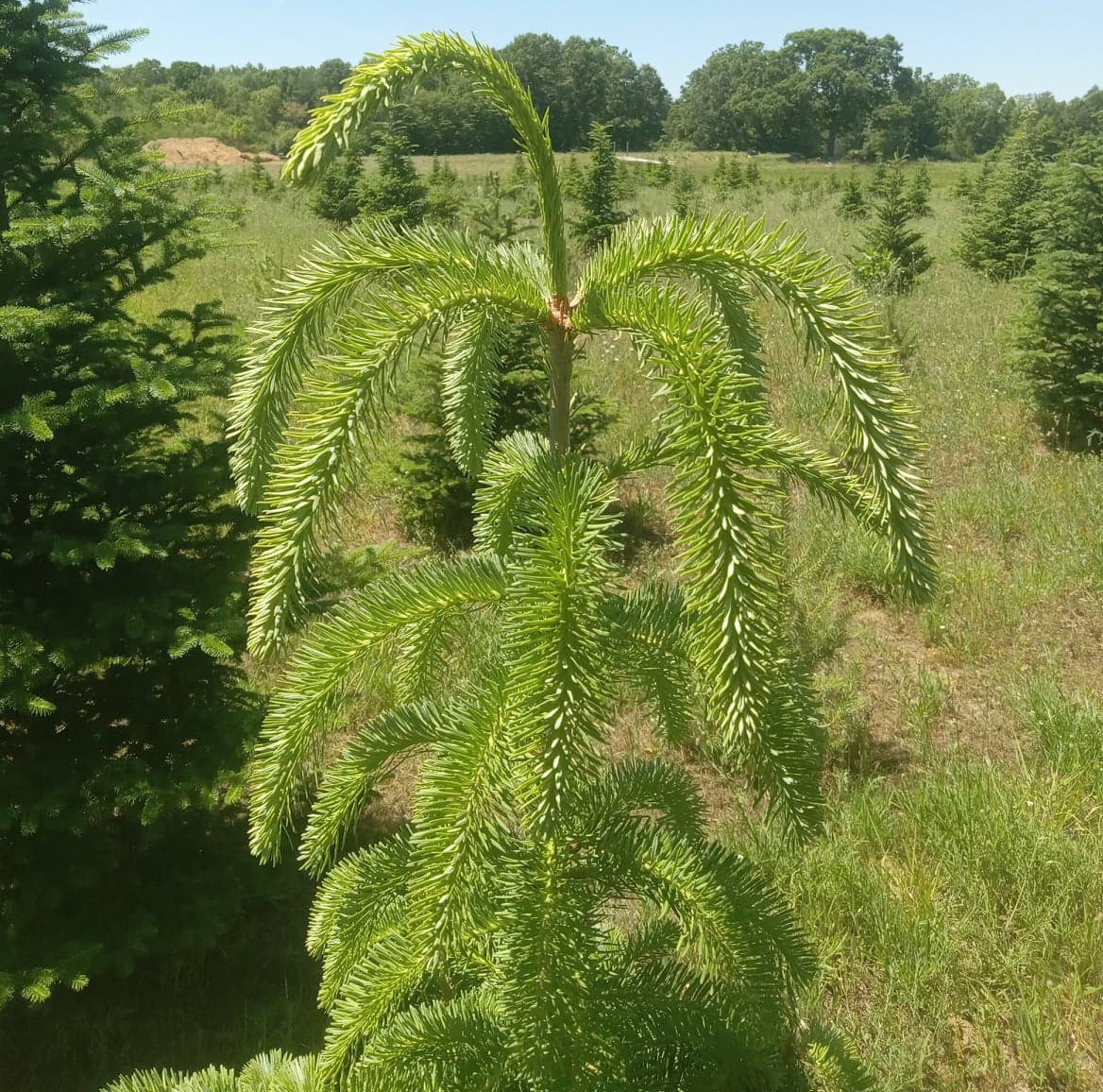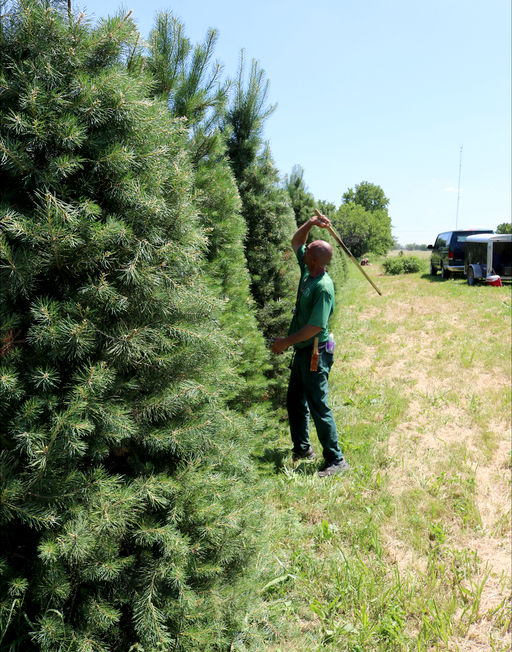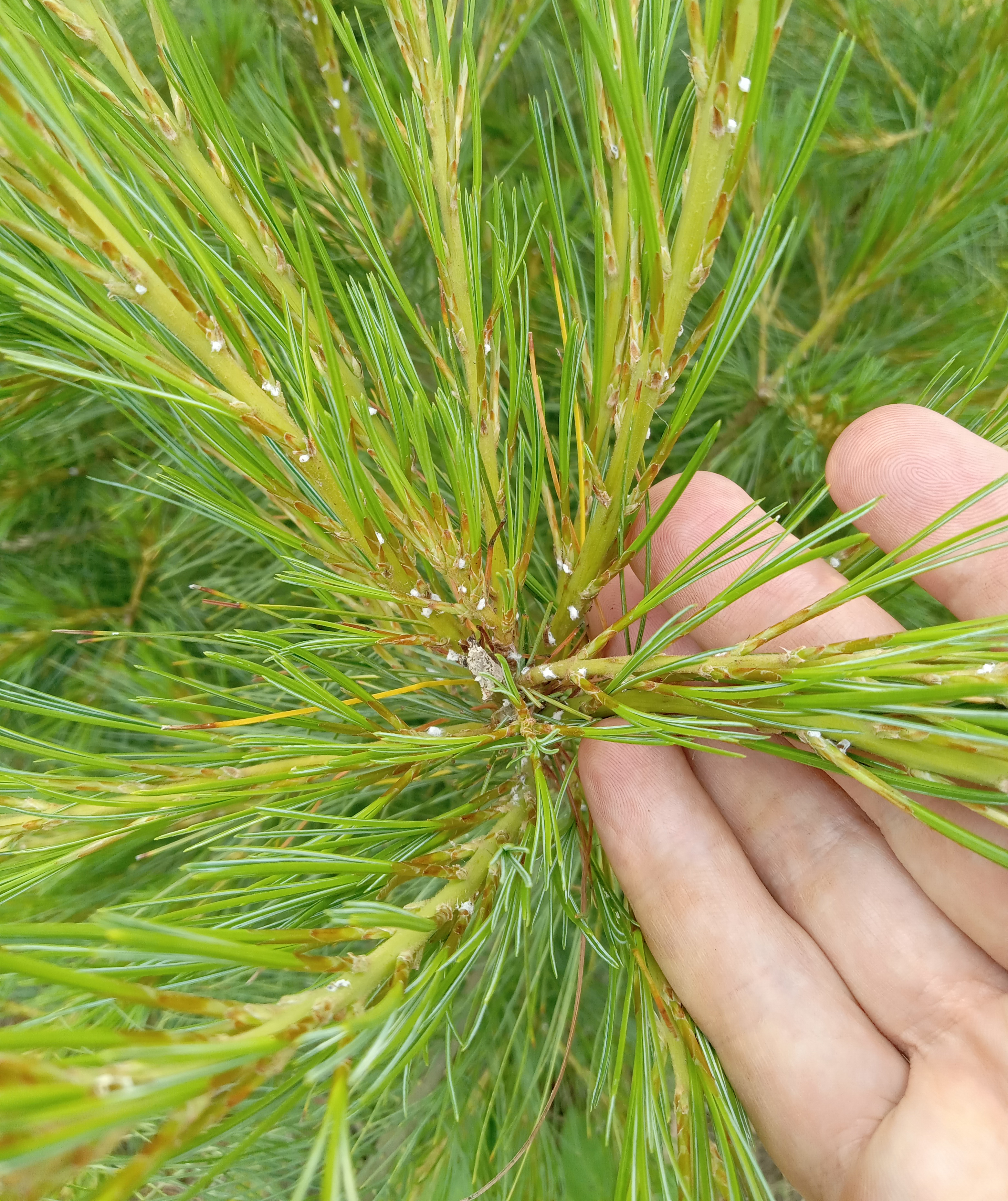Christmas tree update – June 20, 2023
Drought conditions persist over the majority of Michigan.

Weather update
To state the obvious, it has been extremely dry over the last month in Michigan. As an example, the Enviroweather station at the Michigan State University Horticulture Farm in East Lansing, Michigan, has received 1.11 inches of rainfall since May 1, 2023. As a comparison, the five-year average during that period for this station is 4.6 inches of rainfall. Similar examples can be found at weather stations across Michigan. As a result, the majority of Michigan is under drought conditions, ranging from abnormal to moderate drought (Photo 1). The forecast for the upcoming week includes above average temperatures with little to no chance of precipitation. Drought stressed trees may appear wilted (Photo 2) and under severe conditions can result in tree mortality. Young tree plantations are the greatest risk of injury due to their smaller root system. Michigan State University Extension recommends irrigating fields, giving preference to young trees.

Farm update
The time to prune pine trees is quickly approaching (Photo 3). Pines only form new buds at the end of the current year’s shoots in contrast to single needle species (spruces and firs). To stimulate more buds to form (resulting in a denser tree,) shear pines when the current years needles are between half to three-fourths of their total potential length. This generally corresponds between the middle of June to the middle of July, depending on where in Michigan you are located. Many growers start pruning Scots pine and then move to their white pine last. Pruning in this order prevents white pine from setting their new buds too soon, which can result in a subsequent flush of growth in 2023.

Insect update
There have been many reports of pine bark adelgid in 2023 (Photo 4). Pine bark adelgid are very small, brown insects that produce a white cotton-like covering for protection. They feed on plant sap and produce multiple generations within their white covering. For most Christmas tree growers, this insect is considered a minor pest as damage rarely causes a reduction in tree growth. However, for growers in the nursery business, this pest may be problematic for the sale of trees and treatment options can be considered. The MSU Christmas tree pest management guide lists control options, for example dormant oil. However, the window for treatment is very early in the spring, as the nymph stage of pine bark adelgid is active and not protected by a waxy covering. Therefore, keep notes where the pest is in the field for treatment next year. This pest primarily infects white pine but can also target other pine species. It does not feed on fir or spruce trees.

For management information and upcoming events, sign up to receive MSU Extension’s Christmas tree production newsletter. For general information, visit MSU Extension's Christmas Trees website.



 Print
Print Email
Email

